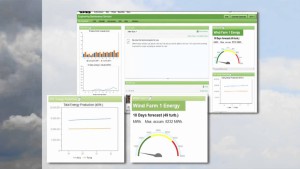 In collaboration with European companies and research institutes, VTT has developed a cloud-based, easily customized, modular software platform to improve the sustainability performance of industrial products by lowering production costs and reducing emissions. The platform provides a virtual collaborative environment for organisations that are jointly developing the same product and/or service.
In collaboration with European companies and research institutes, VTT has developed a cloud-based, easily customized, modular software platform to improve the sustainability performance of industrial products by lowering production costs and reducing emissions. The platform provides a virtual collaborative environment for organisations that are jointly developing the same product and/or service.
The system, created during the recently completed EPES (Eco-Process Engineering System for composition of services to optimise product life-cycle) project, effectively combines a context-aware approach, cloud services, industrial internet, collaborative networks, simulation and assessment of environmental impacts. It offers a set of tools for experts in cooperating organisations to develop and improve products and/or services throughout their lifecycle in a collaborative process.
With the help of the software, it is possible to clarify and partly automate complex development tasks by combining improvements made by specialists both programmatically and manually. The analyses are reproducible, and thus enable a wider scope of study than traditional methodology.
VTT Technical Research Centre of Finland Ltd developed the simulation module for the system, allowing implementation of customized and easily automated simulation services to support decision-making processes. With the help of these services, it is easier to take into account, for example, sustainable development and eco-efficiency indicators, such as energy and material efficiency and emissions, in decision-making processes.
The system prototype was tested for aircraft wing design in collaboration with AIRBUS. Using the solution, the company was able to make decisions related to new wing and factory concepts in a virtual collaboration environment, where emissions and use of materials could also be taken into account.
The system was also applied to the planning of maintenance practices for windmills and to high voltage cable design. For example, the software enabled optimisation of wind farm energy production. Using the tool, this was achieved by taking into account the status of the windmills, together with wind forecasts and other key resources.
The other parties involved in the project in addition to VTT were Tecnalia from Spain, acting as project co-ordinator, ATB from Germany, software companies Sisteplant from Spain and Esteco from Italy, and the companies AIRBUS, Tamoin and NKT, with whom the results of the development work were tested.



